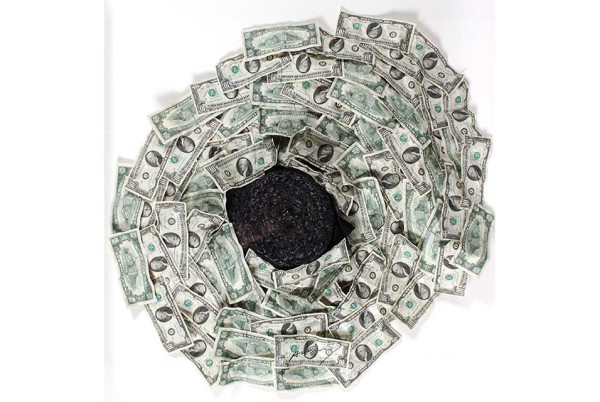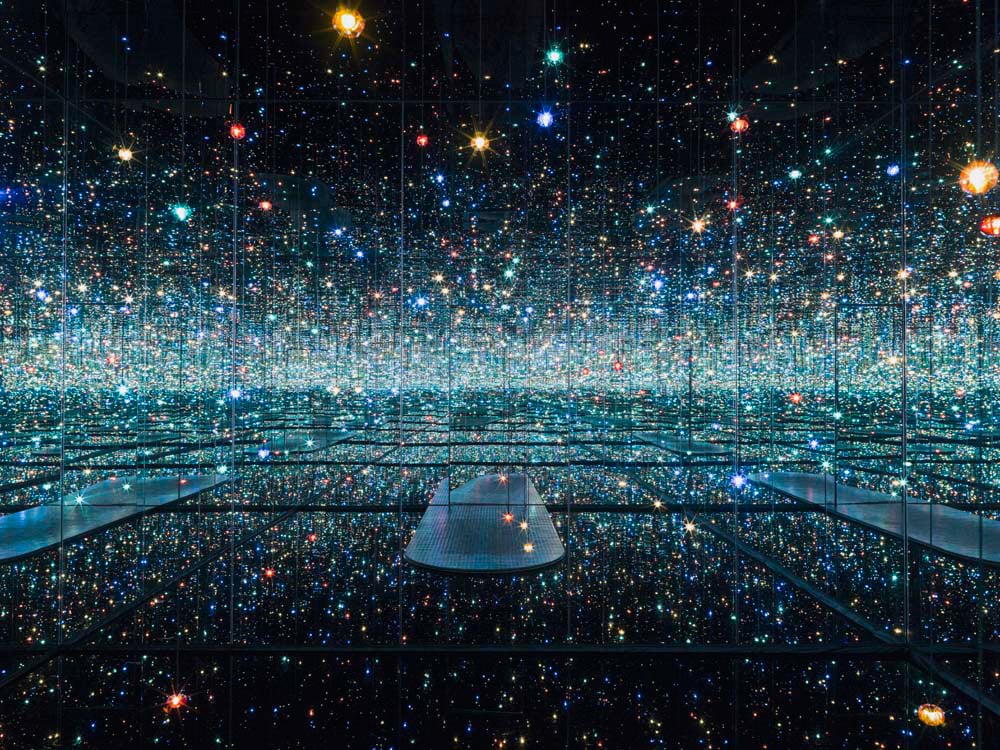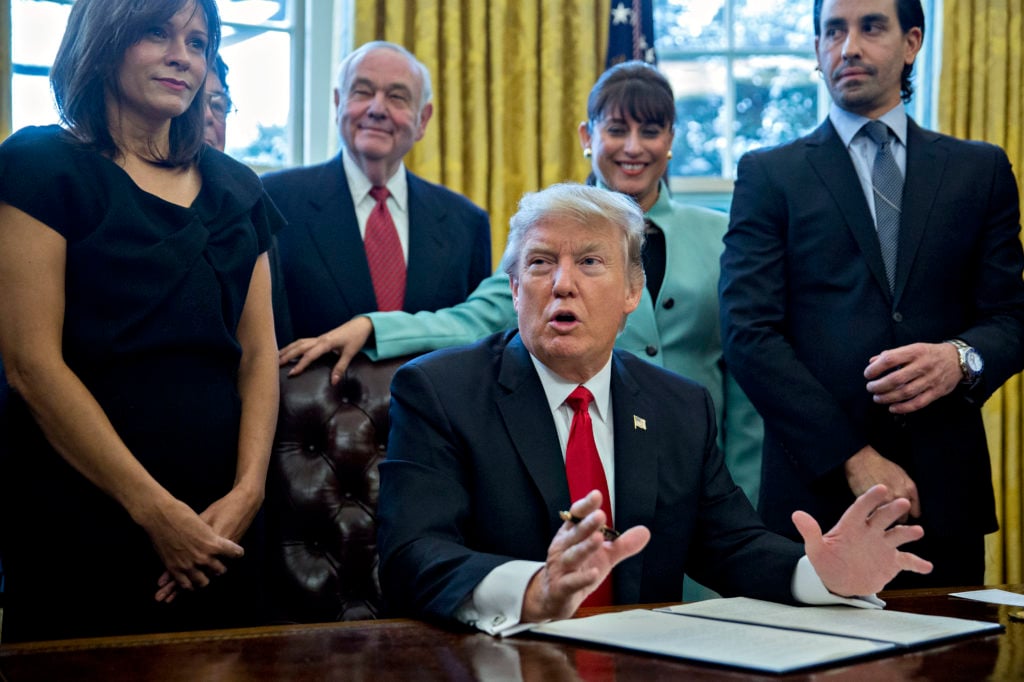Analysis
The Gray Market: How to Make Sense of Artsy’s Latest Funding Round (and Other Insights)
This week, our columnist presents a trio of stories where comparisons brought devastating clarity.

This week, our columnist presents a trio of stories where comparisons brought devastating clarity.

Tim Schneider

Every Monday morning, artnet News brings you The Gray Market. The column decodes important stories from the previous week—and offers unparalleled insight into the inner workings of the art industry in the process.
In this week’s back-from-vacation mega-edition, a trio of stories where comparisons brought devastating clarity.…
VALUE ENGINEERING: On Tuesday, Artsy announced it had secured nearly $50 million in new venture capital, which the startup will use (per its press release) to “continue investing in the platform and to accelerate the growth of its newest business unit, auctions.” This latest cash infusion means that the company has raised over $100 million since its inception, with about $3.6 million in equity and/or debt still up for grabs before this latest offering officially closes, according to Artsy’s Form D filing.
The news has left many in the industry with two questions: First, since Artsy has chosen to keep its actual valuation pitch-black to the public, how much is the company really worth? Second, and just as important, how is that valuation justifiable?
Josh Baer mentioned in his most recent Baer Faxt that “financial experts” with whom he’d consulted were speculating that Artsy’s valuation “may be as high as $2 billion” (as relayed to non-subscribers by Paddy Johnson of Art F City). This possibility left Baer bewildered, given that Sotheby’s “is at a record stock price and still only a market cap of just under $3 billion.” (For the uninitiated, “market cap” is short for “market capitalization,” or the share price of a company multiplied by the number of shares on the market.)
However, after sending the Faxt, Baer realized he’d misinterpreted his sources. (He’s planning a correction later this week.) Which explains why no one I’ve talked to in finance, venture capital, or the startup sector could chart a course to that lofty figure.
Even if no other sources had weighed in with a competing number (more on this in a moment), the basics of venture investing suggest a $2 billion valuation for Artsy must be a mistake. (Note: Anyone who has ever watched an episode of Shark Tank can probably skip down to the paragraph that opens with “Incidentally.”)
For readers who want to bathe in the details, startup founders have two primary ways to raise money: taking out loans or selling equity, i.e. a percentage of ownership in their company. Since the amount of uncertainty—and therefore, risk—surrounding early-stage businesses usually makes it extremely hard to secure loans from traditional banks, many entrepreneurs (especially in tech) turn to more financially daring private investors. This, in an easy-to-swallow capsule, is the venture-capital market.
Obviously, the more equity founders sell, the less they retain for themselves. And the less equity they retain for themselves, the less control they have in their startup, and the less payoff they get if their startup later “exits,” meaning either goes public or gets bought up by a larger entity down the line.
So as a general rule, startup founders aim to maintain a 25-50 percent ownership stake once they’re done fundraising—a process that unfolds over time in “rounds” or “series” of investment offers. A “Series D” round, like Artsy’s most recent, would actually be the fifth, following a “seed” round, then a Series A, B, and C.
Now, the reality is more complicated than what I’m about to propose. But let’s assume: 1) Artsy’s founders managed to hold onto that dreamed-of 25-50 percent ownership stake, 2) they only sold equity to their investors rather than debt (meaning: took out loans), and 3) the Series D was their final frontier of private fundraising.
If all of the above were true, then by basic multiplication, Artsy’s investors’ paying $100 million for a collective 50-75 percent equity stake should mean the company’s actual valuation is somewhat higher than $130-200 million. (I say “somewhat higher” because the valuation founders place on their company—and thus the price of investing in it—ascends in each successive fundraising round, as the venture becomes less and less risky.)
Incidentally, Silicon Valley media outlet TechCrunch noted that Pitchbook, a research/analysis firm that specializes in sourcing private-market data for customers seeking an edge in the venture capital/private equity game, pegged Artsy’s likely valuation at $275 million after this latest investment round.
That’s still very, very good, and Artsy deserves credit for getting there. But it’s also about as far away from $2 billion as Beyoncé’s backup dancers are from being, you know, Beyoncé.
Now that we’ve dealt with the valuation question, though, let’s tackle the larger and more interesting “why?” of Artsy’s fundraising success.
What’s important to remember about venture capital is that investors are mostly paying for the ever-alluring concept of “upside”—and more specifically, upside in multiples. For traditional investments in public companies (see: what you can buy on stock exchanges right now), an overall lifetime return of about five percent, or 1.05X investment, is excellent. When investing in startups, though, the goal is to buy into companies that will return 10X to 100X investment. And that means betting big on potential.
So is Artsy worth $275 million based on money they’re actually making today? No. According to Marion Maneker of Art Market Monitor, “C-level Artsy execs were telling people at Art Basel in Miami [2016] that the company was close to profitability.” In other words, as of last December—about seven years post-founding—Artsy was still operating at a loss. Which, frankly, is not all that unusual for a tech startup. Just look at the accounting bloodbath that is Uber, started back in 2009.
But the point is that someday, Artsy COULD be profitable—maybe even wildly so. In fact, if tech and art synergize in an unprecedented way, it could even become a transformative company in the industry. (Hmm, if only someone had written a book about how this might happen….) And in that case, every venture investors’ stake would pay off dramatically, even if they agreed to a price that seemed higher than was strictly practical at the time.
We humans overvalue—or at least, put a substantial premium on—potential every day. In fact, we just saw another vivid example of this in public investing a week prior to Artsy’s announcement. Last year, Elon Musk’s electric-auto darling Tesla sold about 76,000 cars en route to losing $674.9 million. In comparison, Detroit mainstay General Motors sold about 10 million cars en route to earning $9.4 billion in profits. And yet, 8 days before Artsy’s press release, what happened? That’s right, Tesla’s market cap exceeded GM’s for the first time.
So even if Baer’s “experts” had been right about Artsy’s $2 billion valuation, it wouldn’t be insane. I mean, it would be. But only insane in a “crime of passion” kind of way. In other words: OBJECTIVELY crazy, but also completely understandable in the context of our eternally subjective, endlessly excitable lizard brains.
The moral of the story is simple: Markets are rational, but only to the extent of the people participating in them. And if you think that makes Artsy’s fundraising success ridiculous, then I’ve got some troubling news for you about the buying and selling of actual art in the 21st century, too. [TechCrunch]

Yayoi Kusama, Infinity Mirrored Room. Courtesy of the Broad, Los Angeles.
BROAD AMBITIONS: On Monday, the Los Angeles Times reported two eyebrow-raising facts about admission to the Broad’s upcoming west-coast presentation of “Yayoi Kusama: Infinity Mirrors,” the blockbuster exhibition that drew huge crowds for its selfie-paradise installations and massive ire for its near-endless wait times at the Hirshhorn earlier this year.
First, rather than gradually parceling out timed tickets over the course of the show’s run, most of the entry passes—around 50,000 in total—will be released in a single block at noon on September 1. Which is great for anyone who’s ever thought, “Man, this exhibition looks cool, but it’d be even cooler if trying to get in gave me the same anxiety as trying to buy Kendrick Lamar tickets from LiveNation.” (Note: According to the LAT, a variable number of same-day “standby” tickets will be made available once the show starts, “depending on cancellations, the flow of visitors, and other factors.”)
Second, each coveted pass will cost $25. Which means that the phrase “golden ticket” will almost apply literally, since a gram of 14 Karat scrap gold cost $23.53 when I checked on Friday night.
In an insightful response piece on Tuesday, Andrew Russeth argued that the Broad’s Kusama pricing is troubling in terms of both the comparative return on investment for its ticket-buyers and its alignment with the upward creep of admission fees in many institutions nationwide.
At present, $25 will get you access to the entire collection at MoMA, the Art Institute of Chicago, or SFMOMA, as well as covering the current “suggested” admission at the Met, and/or a cultural cocktail of special-exhibitions-plus-permanent-holdings at LACMA.
However, the same fee at the Broad during the Kusama exhibition will get you access to a grand total of six Infinity Rooms, plus assorted paintings, sculptures, and works on paper. That’s it. That’s the list.
Meanwhile, in contrast to recent admission-cost banishments by institutions like the Dallas Museum of Art and UCLA’s Hammer Museum, Russeth reminds us that roughly 59 percent of American museums still charge all comers for entry, per the Association of Art Museum Directors. (General admission to the Broad is free, but special exhibitions cost varying amounts to visit.)
And perhaps even more distressing, the past few years have also been pockmarked with reversals and hold-outs at the gate by major players. Just consider the Indianapolis Museum of Art’s return to mandatory admission ($18) after seven years of gratis entry; SFMOMA’s decision to provide “not a single hour of regularly scheduled free or corporate-subsidized admission” after its glittering expansion debuted last year; and the Met’s all-but-official choice to move every non-member from the aforementioned “suggested” fee to a Goodfellas-style policy of “f**k you, pay me.”
To me, though, the most interesting dynamic in this comparison is the one that increasingly informs so much of American life, and perhaps life worldwide: public versus private.
While the Broad qualifies as a nonprofit and enjoys several financial perks as a result, it differs from Russeth’s other examples in one important respect: It remains a single-donor museum. Not surprisingly, that single donor, power couple Eli and Edythe Broad, is driven by the thinking of a billionaire businessman—and therefore, undoubtedly recognizes the lucrative financial opportunity that a blockbuster exhibition like “Infinity Mirrors” could be.
As much as I usually hate to generalize, here’s one thing I’ve learned about most, if not all, very successful entrepreneurs: They can’t un-see opportunities to gain an advantage—financial or otherwise—any more than you or I could un-see two octogenarians humping each other like wild animals on a retirement-home bingo table.
This means that many of these wealthy donors—or at least many of the most consequential of them today—have a disturbing tendency to treat philanthropy like a business proposition.
In fact, Eli Broad has been accused of precisely this impulse in regard to his primary philanthropic initiative: the reform of American public education. Graduates of the Broad Academy for superintendents, founded in 2002, have been lambasted for, in the words of Education Week’s Christina A. Samuels, using “corporate-management techniques to consolidate power, weaken teachers’ job protections, cut parents out of decisionmaking, and introduce unproven reform measures” in 21 of the nation’s 75 largest school districts.
James Horn, an associate professor of education policy at Cambridge College, seared this general strategy with the damning brand “venture philanthropy.” Essentially, his argument is that the biggest donors in the 21st century increasingly see giving as a transaction—one in which they can and should leverage each contribution to the hilt, specifically to mold the beneficiary organizations in their business-minded image.
To me, the difference between corporate-rule public-education officials and $25 tickets to private-museum shows is only one of degree. Venture philanthropy underpins both phenomena.
The concept penetrated the nonprofit-art sector years ago. It’s as visible in the Broad’s new exhibition-specific admission fee as it is in every new concession wrung from public museums by private donors whose dollars have become more critical than ever to staying afloat in an austerity-driven era. Fittingly, “Yayoi Kusama: Infinity Mirrors” is only the latest reflection of a policy proliferating as far as the eye can see. [ARTnews]

U.S. President Donald Trump speaks before signing an executive order. Photo by Andrew Harrer— Pool/Getty Images.
ANCHORS AWAY: Finally this week, some news on public-arts funding. Only a few months after Donald Trump’s inaugural budget proposal suggested zeroing out the National Endowment for the Arts and National Endowment for the Humanities, a US House subcommittee passed a bill on Thursday that would bankroll both organizations to the tune of $145 million each.
That rush of hot oxygen you just felt was much of the art industry breathing a collective sigh of relief. Why? Because those numbers mean the NEA and NEH will only suffer a roughly $5 million nick on one cheek rather than the cold shiver of the guillotine blade on the backs of their necks.
However, I think this is a little like having your home invaded by a psycho killer, then being happy that, in the end, they only gunned down grandma and the dog.
As I charted in March, the NEA over the past 20 years has been threatened not by a single deathblow but by a thousand papercuts. If you look at the endowment’s funding as a percentage of total federal-government spending, its resources have dropped by a total of 44 percent in just two decades. Assess any one of those year-on-year slices individually, and it isn’t particularly damaging. But step back to consider the whole, and suddenly it becomes apparent that we’ve lost both legs.
Another comparison makes the cuts even starker. A day prior to the House bill’s passage, mayor Bill de Blasio announced a cultural plan for New York that would provide $188.1 million in arts funding across the five boroughs. This means a single American city will provide about 30 percent more money to the arts in the 2018 fiscal year than the NEA.
All of which demonstrates the sneaky genius of the concept known as “anchoring”: Pin your opponent to a certain standard or expectation at the outset, and the rest of the negotiation will generally stay chained close to that reference point.
So, thunder out of the gates with the declaration that you’ll cut a $150 million program by $150 million, and your opposition will probably be all too happy to accept a $5 million cut instead. After all, in comparison to what you set them up to fight, it’s “only” another 3.3 percent, right?
In this way, the Trump administration and conservatives in Congress have once again rooked liberal defenders of American public-arts funding. Much of the latter group just seems not to have realized it (yet). Why? Because they’re too busy looking at relative losses rather than absolute ones. And in business and politics alike, that’s a great way to bleed out slowly while thinking that all you need to recover is a Band-Aid and another chance. [The New York Times]
That’s all for this edition. ‘Til next time, remember: Context is content.